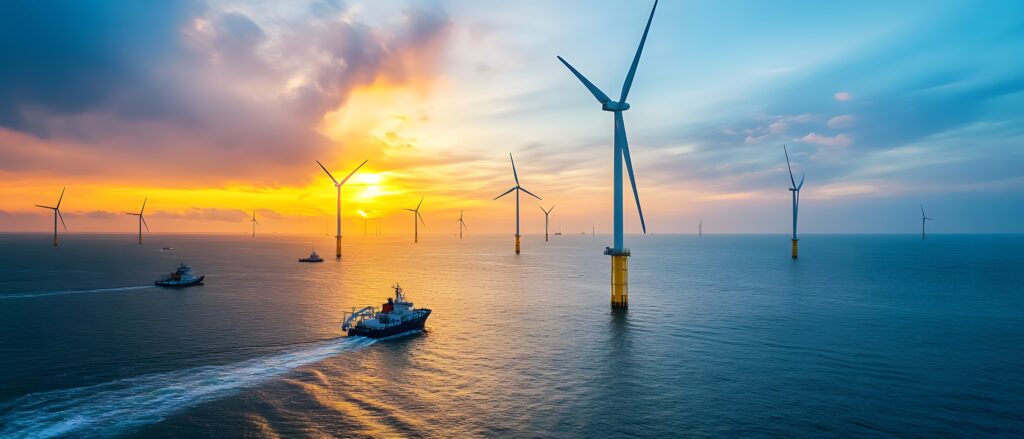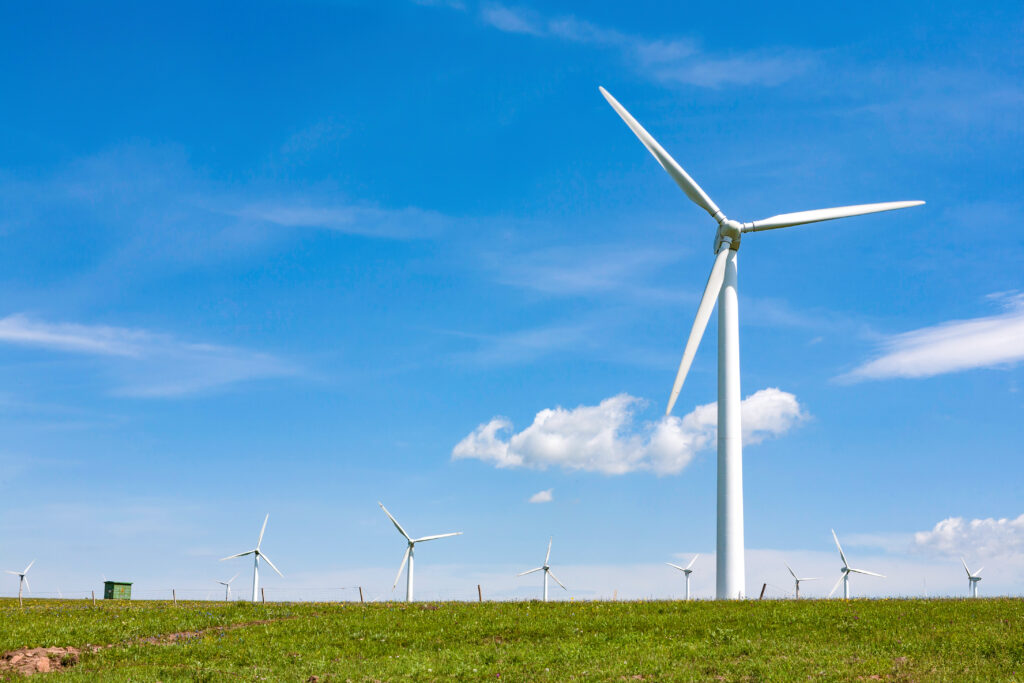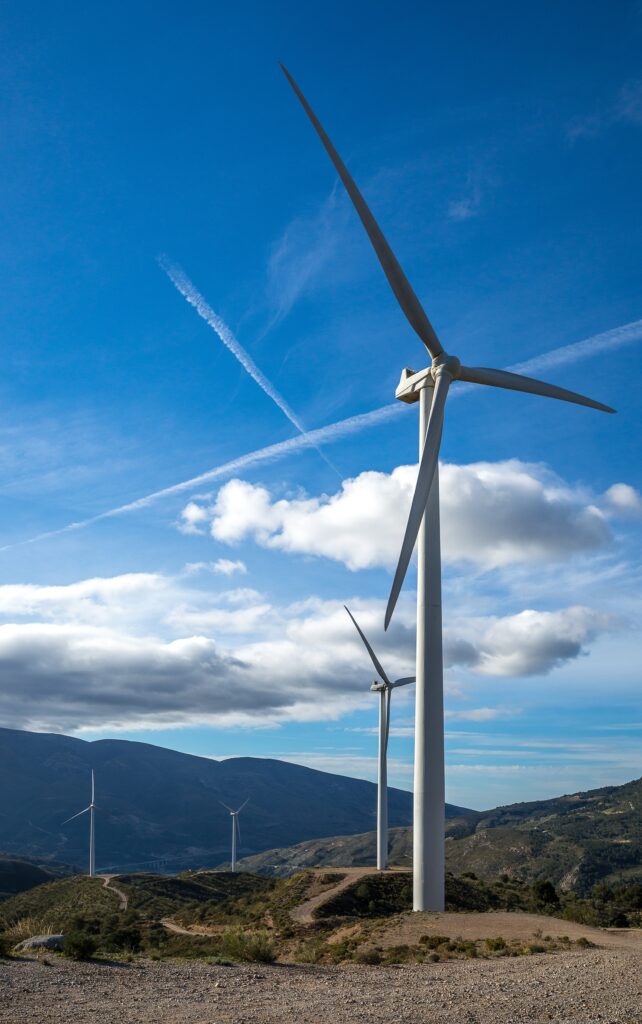



ہوا کی توانائی پائیدار توانائی کے ذرائع کی طرف عالمی تبدیلی میں ایک اہم کردار ادا کرتی ہے۔ جیواشم ایندھن کے صاف متبادل کے طور پر، اس نے کاربن کے اخراج کو کم کرنے کی اپنی صلاحیت کی وجہ سے مقبولیت حاصل کی ہے۔ تاہم، ہوا کی توانائی سے متعلق کئی ماحولیاتی اثرات اور خرافات برقرار ہیں، جو اکثر غلط فہمیوں کا باعث بنتے ہیں۔ ان پہلوؤں کو سمجھنا ہوا کی توانائی کو مؤثر طریقے سے فروغ دینے کی کلید ہے۔
ہوا کی توانائی کے ماحولیاتی اثرات
-
جنگلی حیات کے خدشات: ہوا کی طاقت سے منسلک سب سے اہم ماحولیاتی اثرات میں سے ایک اس کا جنگلی حیات، خاص طور پر پرندوں اور چمگادڑوں پر اثر ہے۔ یہ جانور ٹربائن کے بلیڈ سے ٹکرا سکتے ہیں، جس سے موت واقع ہو سکتی ہے۔ تاہم، مطالعات سے پتہ چلتا ہے کہ ونڈ ٹربائن کی وجہ سے ہونے والی اموات کی تعداد ان لوگوں کے مقابلے میں نمایاں طور پر کم ہے جو انسانوں سے متعلق دیگر سرگرمیوں جیسے رہائش گاہ کی تباہی، گاڑیوں کے تصادم اور گھریلو بلیوں کے شکار سے ہوتی ہیں۔ جاری تحقیق کا مقصد اہم رہائش گاہوں سے بچنے کے لیے بہتر ٹربائن ڈیزائن اور سوچ سمجھ کر سیٹنگ کے ذریعے جنگلی حیات کے اثرات کو کم کرنا ہے۔
-
زمین کا استعمال: ونڈ فارمز کو کافی زمینی رقبہ درکار ہوتا ہے، جو رہائش گاہ کے نقصان اور زمین کے انحطاط کے بارے میں خدشات کو بڑھا سکتا ہے۔ تاہم، انفرادی ٹربائنوں کے قدموں کے نشان نسبتاً چھوٹے ہوتے ہیں، اور ان کے ارد گرد کی زمین کو اکثر زراعت یا چرنے کے لیے استعمال کیا جا سکتا ہے۔ یہ دوہری استعمال ہوا کی توانائی کے مجموعی ماحولیاتی اثرات کو کم کرتا ہے۔
-
شور کی آلودگی: ونڈ ٹربائن آپریشن کے دوران شور پیدا کرتی ہیں، جو قریبی رہائشیوں کو پریشان کر سکتی ہیں۔ جدید ٹربائن ڈیزائن پرانے ماڈلز کے مقابلے میں زیادہ پرسکون ہیں، اور جاری پیشرفت شور کی سطح کو کم کرتی رہتی ہے، جس سے بہت سی کمیونٹیز کے لیے اس تشویش کو کم کیا جاتا ہے۔
-
وسائل کی کھپت: ونڈ ٹربائنز کی تعمیر اور دیکھ بھال کے لیے مختلف وسائل کی ضرورت ہوتی ہے، بشمول اسٹیل، کنکریٹ، اور نایاب زمینی عناصر۔ اگرچہ نکالنے اور پروسیسنگ کے ماحولیاتی اثرات ہوتے ہیں، لائف سائیکل کے تجزیوں سے پتہ چلتا ہے کہ ہوا کی توانائی اپنی پیداوار کے لیے درکار توانائی کے مقابلے اپنی آپریشنل زندگی میں نمایاں طور پر زیادہ توانائی پیدا کرتی ہے۔
-
بصری اثر: ونڈ فارمز زمین کی تزئین کو تبدیل کر سکتے ہیں، جس کی وجہ سے مقامی کمیونٹیز کی مخالفت ہو سکتی ہے۔ جمالیاتی خدشات درست ہیں، اور منصوبہ بندی کے مرحلے کے دوران مقامی اسٹیک ہولڈرز کو شامل کرنے سے ان مسائل کو حل کرنے میں مدد مل سکتی ہے، جس سے زمین کی تزئین میں بہتر انضمام کی اجازت مل سکتی ہے۔
ہوا کی توانائی کے بارے میں خرافات
متک 1: ہوا کی طاقت ناقابل اعتبار ہے۔
بہت سے ناقدین کا کہنا ہے کہ ہوا کی دستیابی پر انحصار کی وجہ سے ہوا کی طاقت غیر پائیدار ہے۔ تاہم، توانائی کے ذخیرہ اور گرڈ کے انتظام میں تکنیکی ترقی نے ہوا کی طاقت کی وشوسنییتا کو بہتر بنایا ہے۔ ممالک کامیابی سے ہوا کی توانائی کو ایک مستحکم بجلی کے ذریعہ کے طور پر استعمال کر رہے ہیں، خاص طور پر جب توانائی کی دیگر شکلوں کے ساتھ مل کر۔
متک 2: ونڈ ٹربائنز بڑی تعداد میں پرندوں اور چمگادڑوں کو مار ڈالتے ہیں۔
اگرچہ یہ سچ ہے کہ ونڈ ٹربائن پرندوں اور چمگادڑوں کے لیے خطرہ بن سکتے ہیں، لیکن جنگلی حیات کو لاحق دیگر خطرات کے مقابلے میں ہلاکتیں بہت کم ہیں۔ مثال کے طور پر، رہائش گاہ کی تباہی اور عمارتوں اور گاڑیوں کے تصادم سے ہونے والی اموات ونڈ ٹربائن کی وجہ سے ہونے والی اموات سے کہیں زیادہ ہیں۔ جنگلی حیات کے اثرات کو مزید کم کرنے کے لیے جدید حکمت عملی تیار کی جا رہی ہے۔
متک 3: ہوا کی توانائی بہت زیادہ مہنگی ہے۔
تاریخی طور پر، ہوا کی طاقت کو مہنگا سمجھا جاتا تھا۔ تاہم، حالیہ برسوں میں قیمتوں میں کمی آئی ہے، جس سے ہوا کی توانائی سب سے زیادہ مسابقتی قیمت پر دستیاب بجلی کے ذرائع میں سے ایک ہے۔ ٹکنالوجی میں ترقی اور پیمانے کی معیشتوں نے اس کمی کو آسان بنایا ہے۔
متک 4: ہوا کی توانائی پانی کی وسیع مقدار استعمال کرتی ہے۔
توانائی کے بہت سے روایتی ذرائع کے برعکس، ہوا کی توانائی کو آپریشن کے لیے خاطر خواہ پانی کی ضرورت نہیں ہوتی۔ یہ خصوصیت پانی کی کمی کا سامنا کرنے والے علاقوں میں خاص طور پر فائدہ مند ہے، ہوا کی توانائی کو ایک پائیدار انتخاب بناتی ہے۔
متک 5: ونڈ فارمز بہت زیادہ جگہ لیتے ہیں۔
ناقدین اکثر یہ کہتے ہیں کہ ونڈ فارمز بہت زیادہ زمین پر قابض ہیں۔ اگرچہ انہیں خاصی جگہ کی ضرورت ہوتی ہے، لیکن ونڈ ٹربائنز کا اصل نقش ارد گرد کی زمین کے مقابلے میں چھوٹا ہوتا ہے۔ مزید برآں، زرعی طریقوں کو اکثر ٹربائن کی تنصیبات کے ساتھ جاری رکھا جا سکتا ہے، جس سے زمین کے موثر استعمال کی اجازت ملتی ہے۔
نتیجہ
ہوا کی توانائی کے ماحولیاتی اثرات، حقیقی ہونے کے باوجود، گرین ہاؤس گیسوں کے اخراج کو کم کرنے اور پائیدار توانائی کے مستقبل کی طرف منتقلی میں اس کے کافی فوائد سے متوازن ہیں۔ عوامی قبولیت اور حمایت کو فروغ دینے کے لیے ہوا کی طاقت سے متعلق خرافات کو ختم کرنا بہت ضروری ہے۔ ہوا کی توانائی ہمارے سیارے کو محفوظ رکھتے ہوئے توانائی کی ضروریات کو پورا کرنے کے ایک اہم موقع کی نمائندگی کرتی ہے۔
ہوا کی توانائی اور قابل تجدید حل کے بارے میں مزید معلومات کے لیے، ملاحظہ کریں۔ اینڈرومیڈا توانائی جہاں آپ پائیدار طریقوں کو چلانے والی جدید ٹیکنالوجیز کو تلاش کر سکتے ہیں۔
مزید تفصیل کے لیے
https://www.renewableenergyworld.com/


جواب دیں